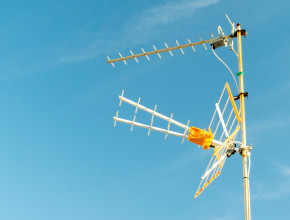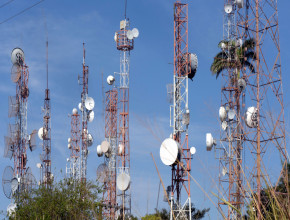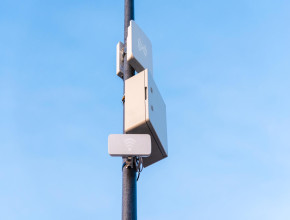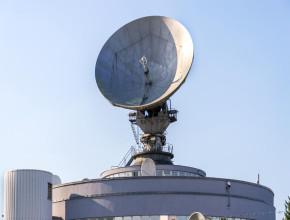
The antenna is the device that helps in receiving and transmitting signals. Another name for the antenna is the radiator. The antenna comes in various types, spaces, sizes, and designs. Some of the most popular kinds of antennas are broadband, patch, horn antenna, log-periodic, dipole, and helical antenna.
A helical antenna is a type of broadband antenna with a simple design. It is also known as a helix antenna which comes in a helical structure form including a wire-wound form. This antenna is widely used in both UHF and VHF frequencies where a circular polarization is needed.
This blog lists everything about a helical antenna, its working process, and the advantages of using this antenna. We will also discuss many other things related to high gain helical antenna in this blog.
What is Helical Antenna?
A helical antenna is a simple kind of antenna that works in UHF and VHF frequencies. It includes a special conducting wire in a helix shape to give powerful waves. High gain helical antennas have some unusual features that you will not find in any other antenna. Those features include high gain, circular polarization, and wide bandwidth.
Normally, the frequency range of a helical antenna starts from 30MHz0 and goes up to 3GHz. It is generally used to boost space communication. Many satellite relays and wireless networking devices and satellite communication use a helical antenna.
Helical Antenna Design
High Gain Helical antennas work differently from traditional antennas used in TV and radio broadcasting. A helical antenna contains a helical radiating element to transmit and receive waves. Helix is supported by a ground plane.
This antenna works on 2 modes of radiation namely normal and axial. In normal radiation mode, the radiation to the axis is perpendicular. Under the axial radiation mode, the radiation is in the axial direction of the axis.
Helical antennas with circular polarization work on both horizontally and vertically polarized waves.
Applications of a Helical Antenna
A helical antenna is used in various applications such as:
- It is used widely in space communications and satellite devices.
- Helical antenna is used for receiving and transmitting VHF signals via the ionosphere.
- This antenna can be used to establish communication between Earth and the moon.
Special Characteristics of a Helical Antenna
Now, let us discuss the special features of a helical antenna in this section:
- Helical antenna has a circular polarization and a simple design.
- This antenna is mostly used in axial mode.
- You can use a helical antenna in various bands such as UHF and VHF.
- Circular polarization works only when the axial ratio is one.
- Linear polarization occurs when the axial ratio is infinite.
- Helical antenna is not selected in normal mode when beam width and efficiency are small in this mode.
- This antenna has a simple design and contains maximum directivity.
Working Process of a Helical Antenna
When the conductive wire is excited through a coaxial cable or two-wire transmission line, the current flows via this conducting wire. This pattern will further cause the generation and emission of radiations in the field lines.
A helical antenna can emit in several modes. The modes of operation of a helical antenna are axial mode and normal mode. Let us have a look at both types of modes in the following section:
-
Normal Mode
In this mode, the diameter and pitch of an antenna are smaller than the wavelength. The operation is analogous to an electrically short dipole or monopole. In a normal mode of radiation, the field of radiation is normal to the helix axis and radiated signals are polarized circularly.
Normal mode has low efficiency and narrow bandwidth. This is the reason why it is mostly used in 2 way mobile phones, portable devices, and UHF TV broadcasting antennas. The radiation pattern of a helical antenna combines both short dipole antennas and loop antennas. The diameter is shown by the symbol D whereas the turn spacing is shown by the symbol S.
The radiation pattern of helical antennas in the normal mode of radiation depends on turn spacing and diameter values. However, the drawbacks of a normal mode are narrow bandwidth and low radiation efficiency.
-
Axial Mode
Under axial mode, the diameter and pitch of a helix antenna are the same as the wavelength. This mode works like a directional antenna. This radiation mode has no simple solution to decide the radiation properties in the axial mode. Axial mode is received by increasing the circumference to the order of one wavelength and spacing.
Many analytical and numerical methods are used in axial mode to conclude these factors. Axial mode is normally used via earth-based stations in the satellite communications system. The radiation pattern in Axial mode is broad and directional with an axial beam generating minor lobes at oblique angles. Axial mode is generated very easily and used in many applications of satellite communication.
Helical Antenna Usage
Now, let us discuss where this antenna is used:
- You can either use single or multiple helical antennas to transmit and receive VHF signals.
- These antennas are used in space probe communications and satellite devices because of their special feature of circular polarization of the transmitted electromagnetic waves and maximum directivity.
- Helical antenna is widely used for several communications such as space telemetry, radio astronomy, space, and satellite.
- It is used for running satellites at Earth Stations.
- Helical antenna is used for telemetry links via ballistic missiles.
- This antenna helps in communicating between Moon and Earth.
- It is used to transmit and receive VHF waves for ionospheric propagation.
- It is used in several satellites such as weather and data relays.
Advantages of Using a Helical Antenna
The helical antenna has several benefits such as:
- It has a simple design with high directivity
- This antenna has a wide bandwidth
- It gives circular polarization and is used at both UHF and VHF bands.
- This antenna has sturdy construction
- Helical antenna can be accepted via both horizontal and vertical polarized antenna types when it uses a circularly polarized pattern.
- It shows highly directional behavior during communication.
- This antenna will give precise communication even from a far-off distance.
How is a Helical Antenna Constructed?
A High Gain helical antenna is made with the help of a conducting wire. A thick copper wire is wrapped in the helix form and used with a metallic plate. This metallic plate is the ground plate.
The excitation to the antenna is given at the end by using a coaxial transmission line. The central conductor is connected to the outer conductor and a helix and it forms a connection with the ground plane.
Final words
A HIgh Gain helical antenna has a simple design and sturdy construction. It works on the number of turns and generally makes satellite communications more precise. These antennas have conducting wire wrapped in a helical form and connected to the ground plate via a feeder line. Due to their high directivity, helical antennas are widely used in space communications and satellite devices.





